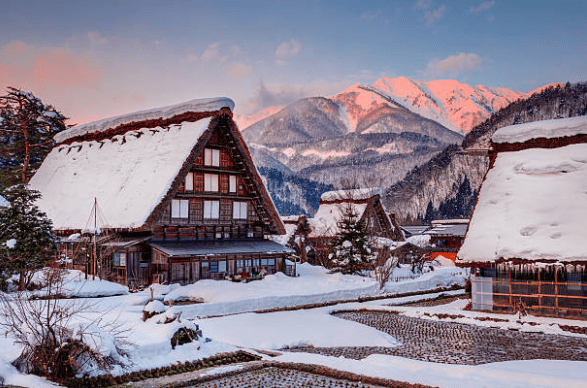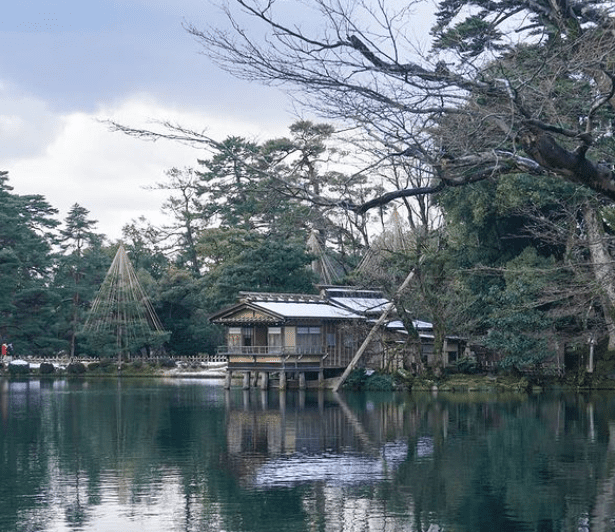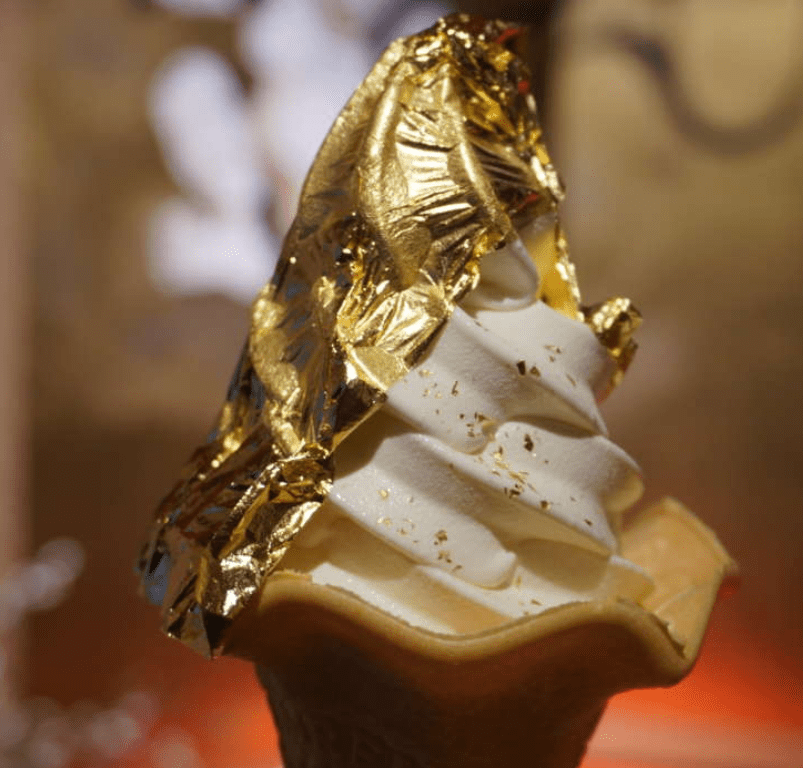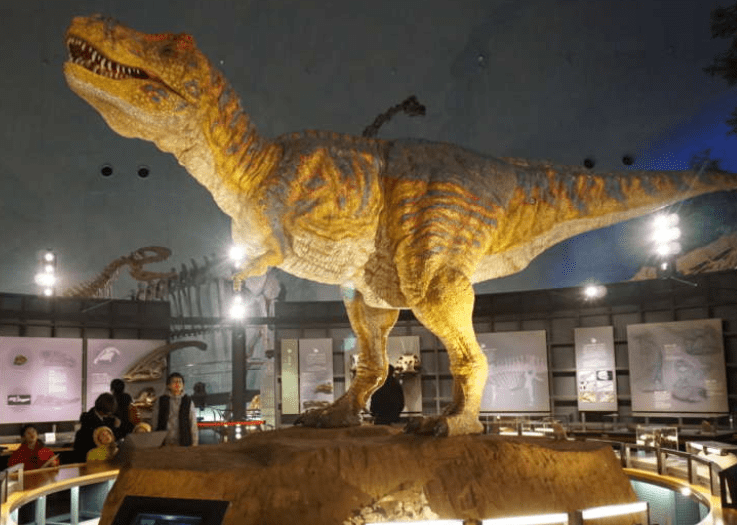The image of Japan in winter is often synonymous with Shirakawa-go. This charming village is renowned for its unique wooden houses with steep thatched roofs, resembling hands in prayer, a style known as gassho. These roofs, designed over 200 years ago to withstand heavy snowfall in this mountain-surrounded village, have earned Shirakawa-go a place on the UNESCO Heritage Site list.

I’ve visited Shirakawa-go twice during winter, with my first visit in 2010. Despite becoming more popular, the village retains its beauty. When thick snow falls, the entire village seems to disappear under a blanket of white, leaving only the triangular rooftops visible. On sunny days, snow gradually slides off the steep roofs.

To experience the interior of these gassho houses and learn about the families living in them, you can visit Kanda House, Wada House, and Nagase House. For museum lovers, there’s the Myozenji Temple and the Gasshozukuri Minkaen Outdoor Museum. If you want a panoramic view of the entire village, you can take a 20-minute walk or a shuttle bus from the bus terminal to the Observatory.
Shirakawa-go is accessible from Nagoya or Osaka, but there are many other beautiful destinations in Central Japan worth visiting along the way. To save on transportation costs, I recommend purchasing the Takayama-Hokuriku Tourist Pass from Japan Rail Pass (JR Pass). Priced at 14,260 Yen, this pass is valid for 5 consecutive days and allows unlimited train and bus rides from Nagoya, Shirakawa-go, Kanazawa, Fukui, Kyoto, to Osaka and Kansai Airport. It’s definitely worth it! You can find more details here.
To help you plan your itinerary, here are some unique destinations and activities you can explore besides Shirakawa-go:
Nagoya
To experience Nagoya’s modern architecture, head to Oasis 21, connected to the Nagoya TV Tower. This shopping complex has a unique oval-shaped glass roof filled with water. You can go up to the roof for city views, and from there, you can also see the ice skating rink below.
On the other hand, visit Nagoya Castle for a glimpse of the city’s ancient architecture. Built in 1610 by the Tokugawa Shogunate and reconstructed several times, the castle is famous for its roof adorned with golden tiger-headed fish statues, which gleam in the distance. Don’t forget to take a walk in the surrounding gardens. In winter, the plum blossoms (ume) bloom, resembling cherry blossoms.
Takayama

Takayama Old Town feels like a scene from a classic Japanese movie, especially when covered in snow! The streets are lined with traditional wooden buildings dating back to the Edo period (1600-1868). Though now home to shops, cafes, museums, and galleries, the area has maintained its original charm. Takayama is also known for its sake, available in several stores. In winter, be sure to try the warm sake!

A famous souvenir from Takayama is the Sarubobo, a traditional Japanese charm doll. Don’t worry, it’s a cute doll made of fabric. They believe that different colors of Sarubobo bring different blessings, such as pink for love, black for status, and yellow for wealth. You can even learn how to make one in a 30-minute class at the Hida Takayama Town Experience Centre.
Hotel Recommendation: Associa Takayama Resort – This hotel is surrounded by mountains and has its own onsen with several outdoor pools. You can even book a private onsen. The buffet dinner at Roriere Restaurant features a wide variety of delicious dishes, especially the steak.
Toyama
Everyone loves tulips, right? Although tulips are commonly associated with the Netherlands, Tonami Tulip Gallery in Japan is a hub for these flowers. The gallery is open year-round, even in winter! Besides the thousands of tulips on display in various colors, you can learn about the history of tulips and the cross-breeding research that can take decades to create a new species.

In Toyama city, Kansui Park surrounds a picturesque canal and lake. Perhaps it’s the view that earned its Starbucks the title of the most beautiful in the world. However, I find it most charming at night when the fountains and decorative lights illuminate the lake.
Kanazawa
The main attractions in Kanazawa are Kanazawa Castle (the Maeda Clan’s castle from 1580-1871, later used as a university from 1945-1989) and especially Kenroku Garden, located right next to it. The garden is beautifully landscaped with tranquil water features and is surrounded by ancient trees tied with ropes to protect them from the heavy snow. To feel like you’re in the imperial era, I participated in a tea ceremony at Gyokusen’an Rest House, where I was served matcha (green tea) and wagashi (sweet mochi) by women in kimono.

For those who love traditional markets, Omicho Market is a must-visit. This market sells a wide variety of seafood, especially crabs of all kinds, some of which cost millions of Rupiah per piece! You can also enjoy fresh seafood at the market’s restaurants; I recommend Restaurant Ichi No Kura.
Kanazawa is famous for its gold leaf, produced since the 16th century. Visit the old town Higashi Chaya District to shop for various gold leaf-adorned crafts, gold-infused cosmetics, or try gold-covered ice cream. I tried it, and it tasted like eating tissue paper. Hehe! But if you’re looking for souvenirs, such as various mochi, you can buy them at Kanazawa Station.

Hotel Recommendation: The Square Kanazawa – I love the interior design of the rooms, with wooden floors. The breakfast here is one of the best in Japanese hotels, with a la carte options, fresh salad greens, and an incredible caramel pudding.
Fukui
The most beautiful natural scenery in Fukui is at Tojinbo, where 1 km of cliffs stretch along the coast, rising 30 meters above sea level. The unique pentagonal and hexagonal rock formations were shaped by the sea over millions of years. On clear days, Tojinbo is stunning with its backdrop of blue sea and sky.
Fukui is also famous for its dinosaurs—the entire city is decorated with dinosaur motifs! Why? Because Fukui is Japan’s largest dinosaur graveyard! Yes, dinosaurs once lived here, and there are five specific species, including Fukuisaurus and Fukuiraptor. You can see all the fossils, bones, and history at the Fukui Prefectural Dinosaur Museum. This museum is incredible, displaying life-sized dinosaur replicas that even move! Uniquely, even the food at the Dino Cafe is dinosaur-shaped, like burgers and cakes.

A unique activity in Fukui is learning to weave at the Yume Ole Katsuyama Textile Factory Memorial Hall. This former silk factory, where silkworm cocoons were spun into fabric, has been converted into a museum. You can learn to weave using the tools provided. I managed to make a coaster. Hehe!
Fukui also has an Old Town to explore, called Monzen Machi. Known as “Temple Town,” it’s a pilgrimage site centered around Eiheiji Temple. The uniqueness here lies not in the old buildings but in the tall ancient trees lining the riverbanks. The atmosphere is calm and peaceful, and when the snow falls, it creates a magical feeling.

безопасная сделка аккаунтов услуги по продаже аккаунтов
магазин аккаунтов продажа аккаунтов
покупка аккаунтов платформа для покупки аккаунтов
покупка аккаунтов маркетплейс аккаунтов
продажа аккаунтов продать аккаунт
безопасная сделка аккаунтов продажа аккаунтов
аккаунты с балансом перепродажа аккаунтов
магазин аккаунтов маркетплейс аккаунтов
маркетплейс аккаунтов продать аккаунт
площадка для продажи аккаунтов безопасная сделка аккаунтов
магазин аккаунтов социальных сетей услуги по продаже аккаунтов
продажа аккаунтов соцсетей магазин аккаунтов
маркетплейс аккаунтов биржа аккаунтов
услуги по продаже аккаунтов маркетплейс аккаунтов соцсетей
продажа аккаунтов соцсетей https://pokupka-akkauntov-online.ru/
Guaranteed Accounts Account marketplace
Social media account marketplace Account Buying Platform
Online Account Store Account Buying Service
Account Trading Service Verified Accounts for Sale
Account Sale Account Market
Find Accounts for Sale Secure Account Sales
Buy accounts Account exchange
Account marketplace Buy Pre-made Account
Secure Account Sales Account Buying Service
Account Buying Service Ready-Made Accounts for Sale
account selling platform account sale
account purchase social media account marketplace
account store online account store
secure account sales gaming account marketplace
buy pre-made account buy and sell accounts
website for selling accounts sell accounts
buy pre-made account accounts market
account buying service database of accounts for sale
account trading service https://discountaccountsmarket.com
account exchange service accounts marketplace
website for selling accounts account purchase
account marketplace sell account
account market account trading platform
secure account purchasing platform account catalog
buy pre-made account find accounts for sale
accounts for sale https://buy-social-accounts.org
buy accounts account trading service
account trading platform accounts for sale
account buying platform account market
account buying platform account exchange service
account selling service website for buying accounts
purchase ready-made accounts marketplace for ready-made accounts
account trading platform accounts marketplace
account market account trading platform
account trading platform online account store
account exchange service sell accounts
sell pre-made account account acquisition
account catalog https://accounts-offer.org
buy accounts https://accounts-marketplace.xyz
account trading platform https://social-accounts-marketplaces.live
account buying platform https://accounts-marketplace.live
account selling platform https://social-accounts-marketplace.xyz
social media account marketplace https://buy-accounts.space
account marketplace account marketplace
account buying platform https://buy-accounts.live
account sale https://accounts-marketplace.online
ready-made accounts for sale https://social-accounts-marketplace.live
sell accounts https://accounts-marketplace-best.pro/
маркетплейс аккаунтов https://akkaunty-na-prodazhu.pro
маркетплейс аккаунтов купить аккаунт
магазин аккаунтов https://kupit-akkaunt.xyz
маркетплейс аккаунтов https://akkaunt-magazin.online
маркетплейс аккаунтов соцсетей https://akkaunty-market.live/
продать аккаунт https://kupit-akkaunty-market.xyz
покупка аккаунтов akkaunty-optom.live
купить аккаунт магазины аккаунтов
купить аккаунт магазины аккаунтов
маркетплейс аккаунтов соцсетей https://kupit-akkaunt.online/
buy facebook old accounts buy fb ad account
facebook ad accounts for sale https://buy-ad-accounts.click
facebook ad accounts for sale buy facebook advertising accounts
facebook account buy https://buy-ads-account.click
buy facebook accounts https://ad-account-buy.top
buy facebook ads manager https://buy-ads-account.work
buy account facebook ads facebook ads account for sale
Эта познавательная публикация погружает вас в море интересного контента, который быстро захватит ваше внимание. Мы рассмотрим важные аспекты темы и предоставим вам уникальныеInsights и полезные сведения для дальнейшего изучения.
Углубиться в тему – https://medalkoblog.ru/
buy account facebook ads buy a facebook account
buy facebook ads accounts buy facebook account for ads
buy verified google ads account buy account google ads
google ads agency account buy buy adwords account
facebook ad account for sale https://buy-accounts.click/
google ads account buy buy google ads threshold account
google ads account buy buy google agency account
buy google ads account buy google ads threshold account
buy google ad threshold account https://buy-account-ads.work/
google ads agency accounts https://buy-ads-agency-account.top
buy google ad threshold account buy google adwords accounts
buy google ads threshold account https://ads-agency-account-buy.click
buy verified facebook https://buy-business-manager.org/
google ads agency account buy google ads agency accounts
buy fb bm https://buy-bm-account.org/
buy facebook verified business manager https://buy-verified-business-manager-account.org/
buy fb bm https://buy-verified-business-manager.org
buy facebook bm buy-business-manager-acc.org
buy facebook business manager account https://business-manager-for-sale.org
facebook bm account buy buy-business-manager-verified.org
buy facebook business manager https://buy-bm.org
verified business manager for sale https://buy-business-manager-accounts.org/
buy tiktok business account https://buy-tiktok-ads-account.org
unlimited bm facebook buy facebook business manager accounts
tiktok ads account buy https://tiktok-ads-account-buy.org
buy tiktok ads https://tiktok-ads-account-for-sale.org
buy tiktok ads accounts https://tiktok-agency-account-for-sale.org
tiktok agency account for sale https://buy-tiktok-ad-account.org
tiktok ads account for sale https://buy-tiktok-ads-accounts.org
buy tiktok ad account https://tiktok-ads-agency-account.org
tiktok ads account for sale https://buy-tiktok-business-account.org
buy tiktok ads accounts https://buy-tiktok-ads.org